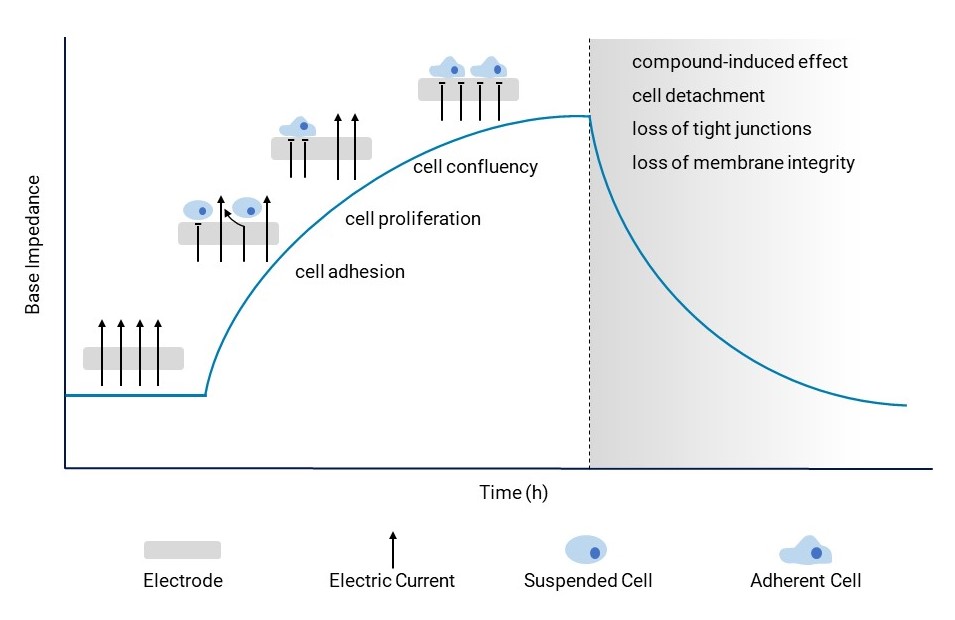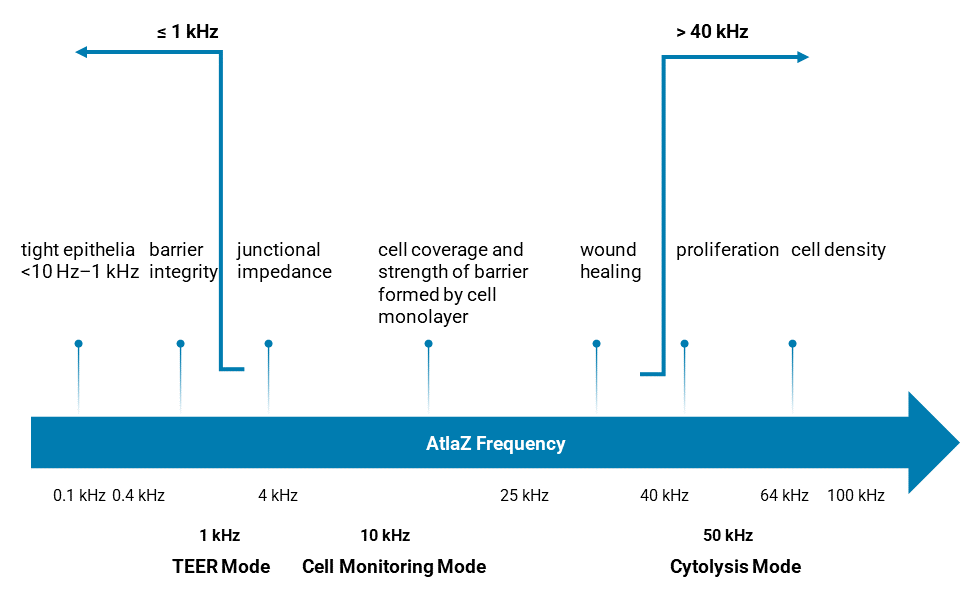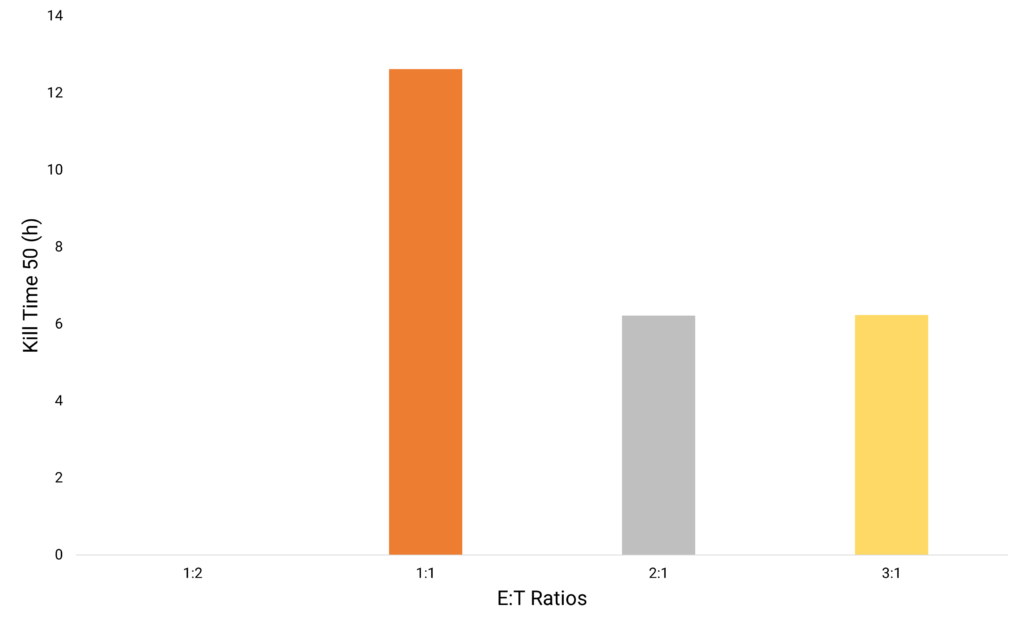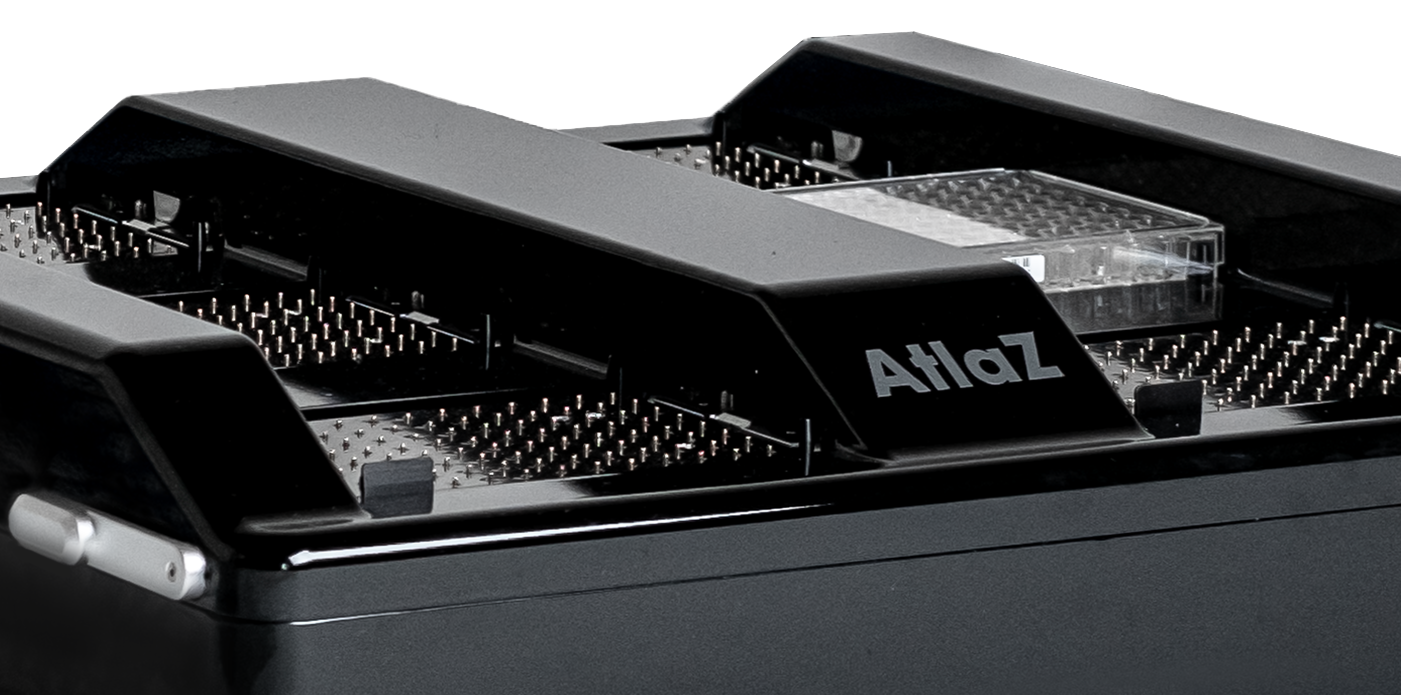AtlaZ Technology
To achieve a comprehensive analysis of cellular processes, it is essential to employ continuous real-time monitoring. The AtlaZ allows access to kinetic and phenotypic data and therefore offering a comprehensive understanding of cellular dynamics. Assessing such physiological effects across various tissue types is crucial for evaluating the impact of small molecules, larger proteins, or immune cell responses. Whether it’s studying cell-killing kinetics, GPCR effects, or examining barrier integrity, each aspect holds significant importance. With the AtlaZ service capability to analyze all these factors simultaneously across 576 wells, it offers unparalleled efficiency in comprehensive live-cell analytics assessment.
Label-Free Morphological Analysis
The AtlaZ methodology is based on electrical impedance spectroscopy, utilizing unique 96-well cell culture plates equipped with integrated gold electrodes. This setup enables quantitative live-cell analysis by precisely measuring the impedance (Ohm) of adherent cells. The recorded base impedance value offers insights into cell adherence, proliferation, cell death or barrier dynamics.

Simultaneous Frequency Assessment
Covering a frequency spectrum from 0.1 kHz to 100 kHz, the system allows for the analysis of diverse cellular information. This includes assessing barrier integrity, cytolysis, cell monitoring, and Transepithelial Electrical Resistance (TEER). The capability for simultaneous assessment across all frequencies expedites live-cell analytics by analyzing multiple cellular reactions at a time.

Case Study
Monitoring Immune Cell Mediated Killing of Cancer Cells
Modern immunotherapies harness the power of CAR-T cells or antibodies to combat various solid or hematopoietic cancer types. With novel CAR-T cell therapies emerging, validating the potency of these cell therapies and accurately understanding their toxicity requires an advanced, human-based methodology.

Effector T-Cell mediated killing of A549 cancer target cells show a ratio-dependent increase in cytolysis upon increasing E:T cell ratios. The analyzed metric „kill time 50“ shows that 50 % of cancer cells were killed between 6 h – 13 h dependent on the E:T cell ratio.


